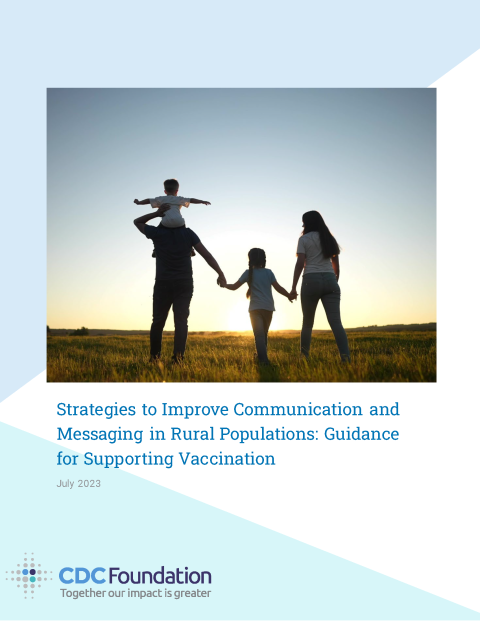You are here
New Public Health Communications Guide: Reaching Rural Americans
At the U.S. Census Bureau’s last count in 2020, almost 67 million Americans, or 20% of the population, live in rural areas. Even though that’s a minority of the total U.S. population, rural residents are much more likely to die from potentially preventable causes like heart disease, cancer, unintentional injuries and stroke than people who live in metropolitan areas. In general, rural residents in the U.S. tend to be older and sicker than their urban counterparts.
These dramatic differences provide proof that access to better resources could help improve the health of people in rural America. According to the Centers for Disease Control and Prevention (CDC), “Rural areas could benefit from improved public health programs that support healthier behaviors and neighborhoods, and better access to healthcare services."
National Rural Health Day
In response to this need, the CDC Foundation developed a downloadable document called Strategies to Improve Communication and Messaging in Rural Populations: Guidance for Supporting Vaccination, to be released on Rural Health Day, November 16, 2023. This resource was created in partnership with rural, frontier and tribal public health advocates to promote the importance of vaccinations through direct, effective communication to these diverse populations from those who best understand the needs of their own communities.
The guide includes:
- a review and discussion on key messages for vaccine uptake
- preferred channels to receive the information
- potential partners to deliver the messages
- an extensive list of suggested resources, summarized expert guidance and spotlighted strategies for success
The information was gathered to help support health departments that serve rural populations; however, the guidance can be used by a variety of organizations wanting to effectively communicate with rural community members.

Community Members Need Input on Messaging
More than a dozen academics, state officials, local health department staff, hospital administrators and members of community organizations attended a virtual feedback session prior to the release of the guide. One of the stakeholders had this advice: “Our approach has been to focus on the community voice and what the community needs. In terms of my experience working with tribal, rural and frontier populations, it’s been listening to the community and making sure they have input.”
The CDC Foundation’s chief health equity and strategy officer, Lauren Smith, MD, MPH, also recommends that method and said, “We hope this new resource will prove useful in local efforts to protect and improve the health and lives of rural Americans.”
This publication was supported by the Centers for Disease Control and Prevention (CDC) of the U.S. Department of Health and Human Services (HHS) as part of a financial assistance award totaling $20,000,000 with 100 percent funded by CDC/HHS. The contents are those of the author(s) and do not necessarily represent the official views of, nor an endorsement, by CDC/HHS, or the U.S. Government.
